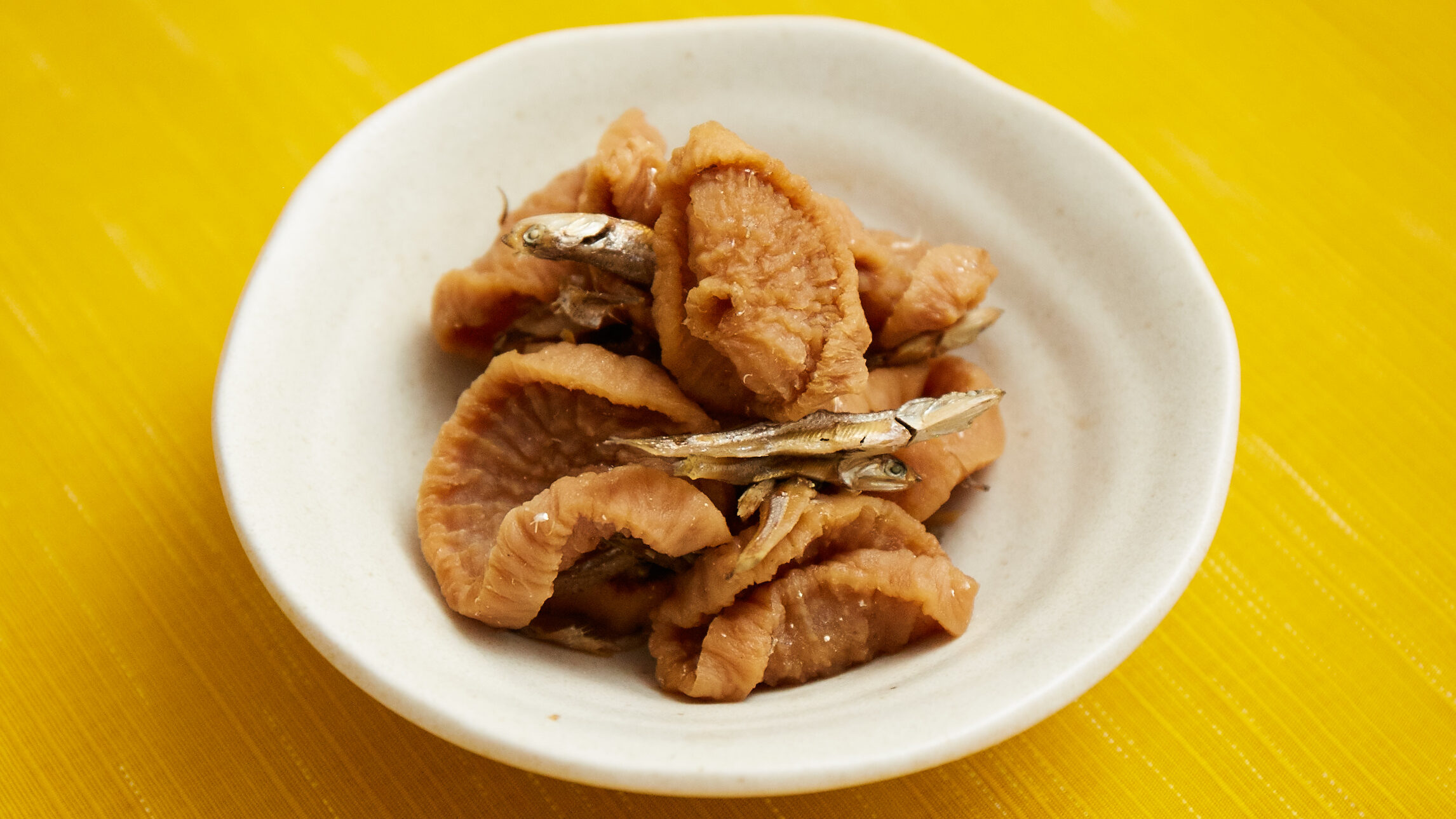
Alright, let’s talk about a Shimane classic – “Hoshi Daikon no Nishime”! In Shimane, there’s a real tradition of making dried goods and preserved foods, and this dish is a perfect example. It all starts with daikon radishes, which are harvested in the fall and winter. Since there weren’t many fresh veggies available in early spring, drying them was a smart way to keep them around. And let me tell you, drying does wonders for the flavor and nutrition! Let’s get into the details of this Shimane staple.
Dish Name: Hoshi Daikon no Nishime
- Region / Location: Iwami Region (Hamada City, etc.)
- Primary Area of Tradition: Iwami Region
- Main Ingredients: Dried daikon radish
How It’s Eaten / Served
Shimane Prefecture has a rich tradition of preserving daikon radish in various ways. [cite: 1] For example, in the Oki region, they cut thicker radishes into quarters and hang them to dry, while smaller ones are shredded into “kiriboshi daikon” (dried shredded daikon). [cite: 1] Drying not only preserves the daikon but also concentrates its umami, sweetness, and nutrients like calcium. [cite: 1] They even have a method of burying fresh daikon in snow to keep it fresh until spring! While dried daikon is used throughout Shimane, “Hoshi Daikon no Nishime” is a local dish particularly popular in the Iwami region. [cite: 1]
Dried daikon is a versatile ingredient used in many dishes like curries, salads, and even as a filling for gyoza and omelets. [cite: 1] But in the Iwami area, “Hoshi Daikon no Nishime” is a real go-to. To make it, daikon is peeled, cut into rounds with a hole in the center, and threaded onto straw ropes. [cite: 1] After about a month of drying, it’s steamed and then dried again in the cold wind, which makes it extra sweet. [cite: 1]
To cook “Hoshi Daikon no Nishime,” the dried daikon is removed from the straw, rehydrated in hot water, and stir-fried. [cite: 1] The soaking liquid is used as a base for the broth, which is seasoned with ingredients like iriko (dried sardines), sake, mirin, soy sauce, and sugar. [cite: 1] The result is a flavorful and comforting dish.
Cultural Background and Preservation
Dried daikon is a testament to the ingenuity of the past, a way to make the most of the harvest and ensure a supply of vegetables through the winter. [cite: 1] Because drying concentrates the nutrients, it’s a healthy ingredient that’s still enjoyed as an everyday dish in Shimane. [cite: 1] You can easily find dried daikon at local markets, and there are even programs where schoolchildren learn how to grow, harvest, prepare, and cook it. [cite: 1] It’s great to see this tradition being passed on!
Additional information:
- Hoshi Daikon (干し大根): Dried daikon radish.
- Nishime (煮しめ): A Japanese dish of simmered vegetables, often served during the New Year.
- Iwami (石見): A region in western Shimane Prefecture.
- Kiriboshi Daikon (切り干し大根): Dried shredded daikon radish.
- Iriko (いりこ): Small dried sardines used for making dashi (soup stock).
- Mirin (みりん): Sweet rice wine used for cooking.
- Umami (旨味): Savory taste.
The information about regional cuisine featured on this website (Piggy's Grandma of Japan) is summarized and adapted from the Ministry of Agriculture, Forestry and Fisheries of Japan (MAFF) website, "Our Regional Cuisines"Additional commentary is provided based on the unique experiences and perspectives of the site's editors.
The copyright for the original content regarding regional cuisine belongs to the Ministry of Agriculture, Forestry and Fisheries of Japan.
The summaries and adaptations published on this site are intended for informational purposes only. Piggy's Grandma of Japan does not guarantee the accuracy or completeness of this information. For the most accurate and complete details, please refer to the original pages on the MAFF website.

